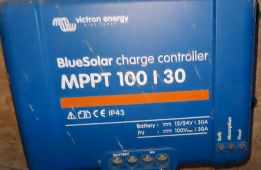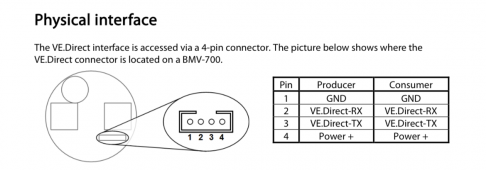Hi,
I have been tasked with research on building a battery and re-deploying a solar system utilized by an animal shelter in my country. They have no electricity nor water and they use a generator to power the water pump. They spend over 60 EUR per month on fuel. They already have 8 solar panels, 4 mono and 4 poly, I only know the specs of one type and it is Canada Solar CS6P-235P. They also have a Victron BlueSolar 12/24V 30A MPPT and a generic 3kW 24V inverter.
My colleague who volunteers there has asked me and another engineer from the company we work at to give stuff a look and try to come up with a list of what needs to be bought. We're also going to do the assembly. I feel fairly comfortable with electronics and know the safety rules (I finished 4 years of electronics in high-school) and the other colleague is an EE, but we never worked with solar nor LiFePO4 before.
We decided on a 8S pack of Grade B 102Ah cells from Luyuan (because of the cost, we have a spending limit of 650 EUR and even then 100 EUR comes out of donations from our colleagues, and the shelter will try to collect more donations. They are a no-kill shelter so they don't get as much money as the other shelters from the country (Croatia)). We are deciding on a BMS right now and this is where the first confusion comes in. I'm looking at both Daly Smart BMS (https://www.aliexpress.com/item/1005002897035148.html) and JBD (https://www.aliexpress.com/item/1005002684884280.html). Now Daly looks more "professional" but from what I understand is that JBD is actually also quite good? We also looked at the Daly + active balancing but from skimming the forum I found that doesn't seem that important?
Last question for now would be, how does it actually work if the 8S pack is detected as a 24V pack but the nominal is 25.6V, does that mean it won't charge over 24 or? I'm a bit confused here sorry ?.
Kindest regards,
Roberto Banić
I have been tasked with research on building a battery and re-deploying a solar system utilized by an animal shelter in my country. They have no electricity nor water and they use a generator to power the water pump. They spend over 60 EUR per month on fuel. They already have 8 solar panels, 4 mono and 4 poly, I only know the specs of one type and it is Canada Solar CS6P-235P. They also have a Victron BlueSolar 12/24V 30A MPPT and a generic 3kW 24V inverter.
My colleague who volunteers there has asked me and another engineer from the company we work at to give stuff a look and try to come up with a list of what needs to be bought. We're also going to do the assembly. I feel fairly comfortable with electronics and know the safety rules (I finished 4 years of electronics in high-school) and the other colleague is an EE, but we never worked with solar nor LiFePO4 before.
We decided on a 8S pack of Grade B 102Ah cells from Luyuan (because of the cost, we have a spending limit of 650 EUR and even then 100 EUR comes out of donations from our colleagues, and the shelter will try to collect more donations. They are a no-kill shelter so they don't get as much money as the other shelters from the country (Croatia)). We are deciding on a BMS right now and this is where the first confusion comes in. I'm looking at both Daly Smart BMS (https://www.aliexpress.com/item/1005002897035148.html) and JBD (https://www.aliexpress.com/item/1005002684884280.html). Now Daly looks more "professional" but from what I understand is that JBD is actually also quite good? We also looked at the Daly + active balancing but from skimming the forum I found that doesn't seem that important?
Last question for now would be, how does it actually work if the 8S pack is detected as a 24V pack but the nominal is 25.6V, does that mean it won't charge over 24 or? I'm a bit confused here sorry ?.
Kindest regards,
Roberto Banić





